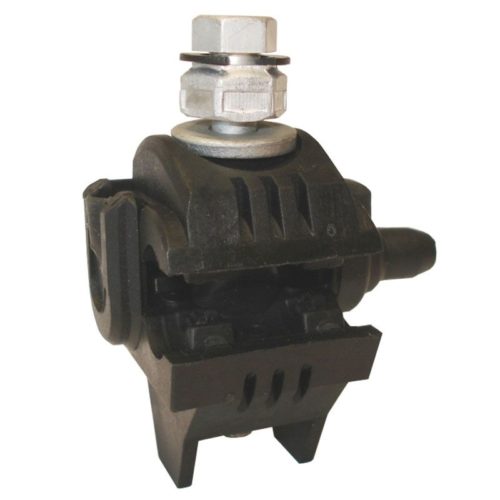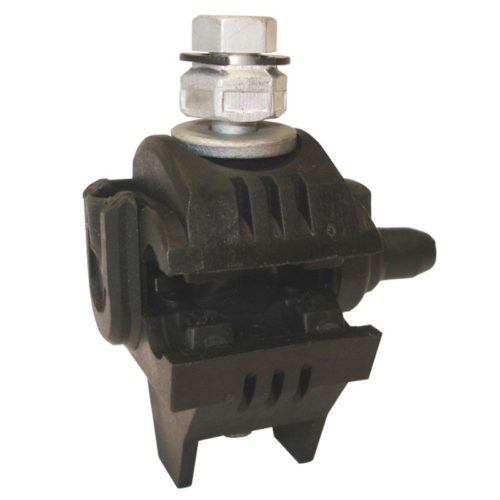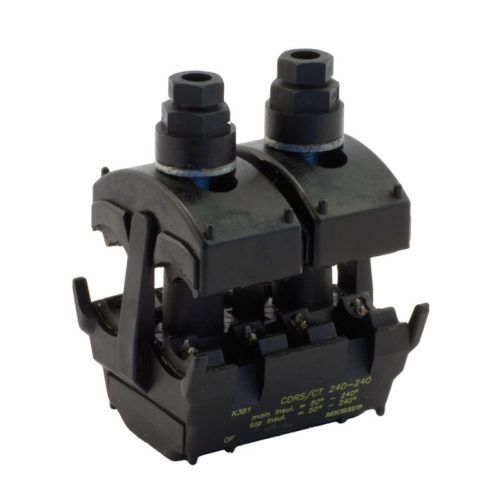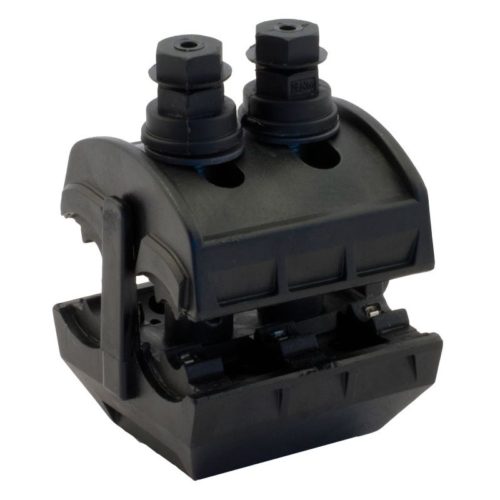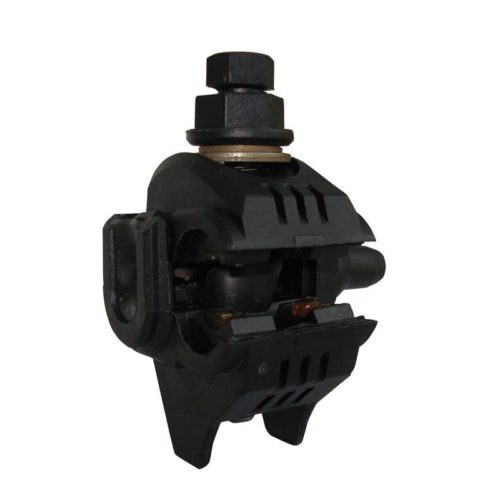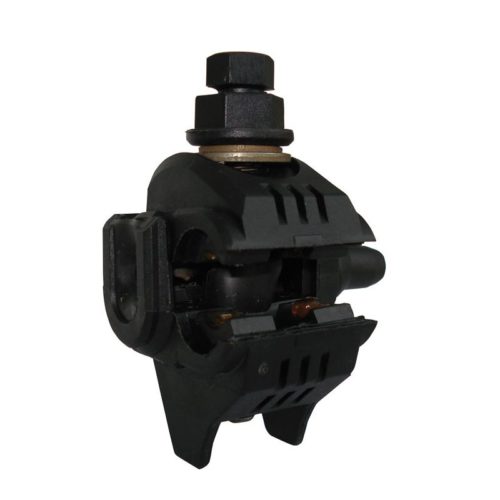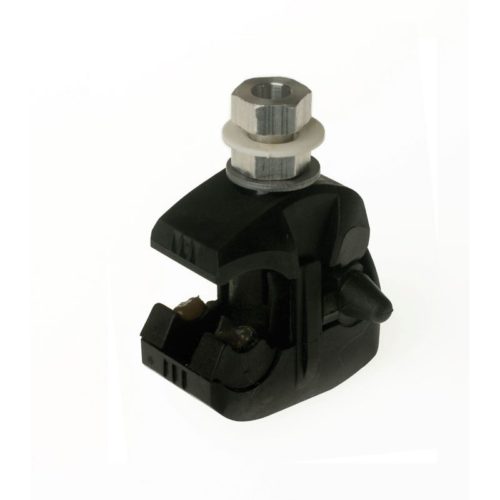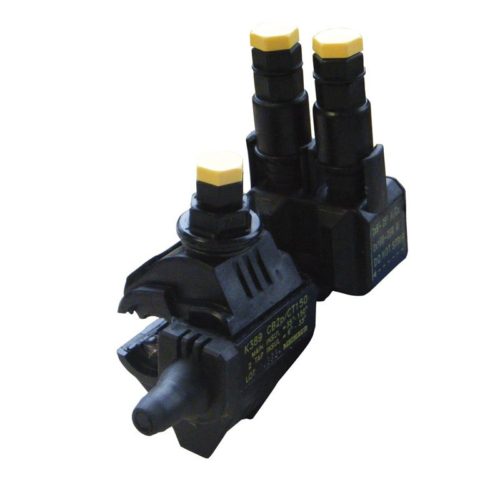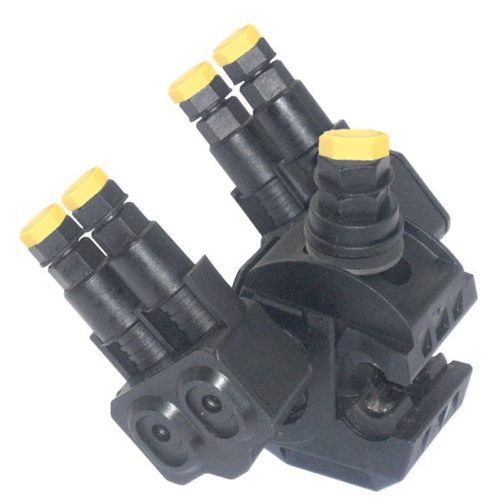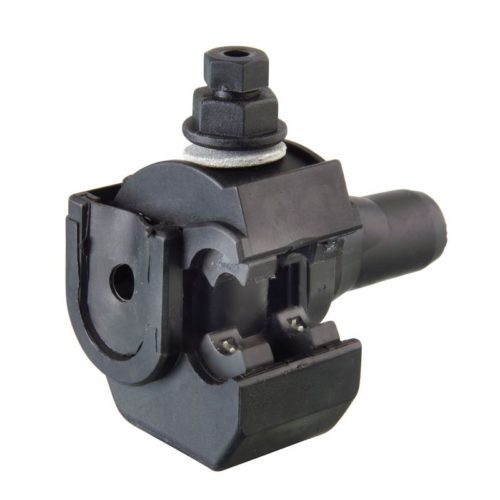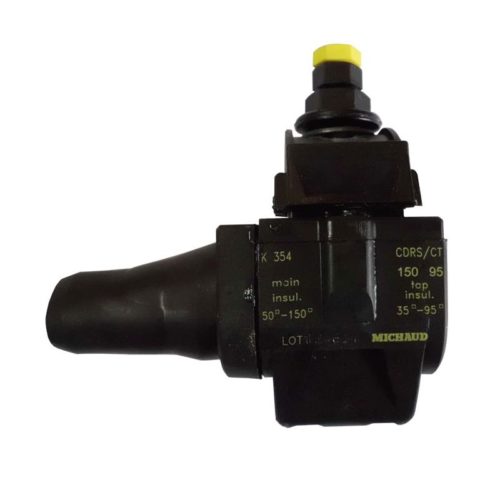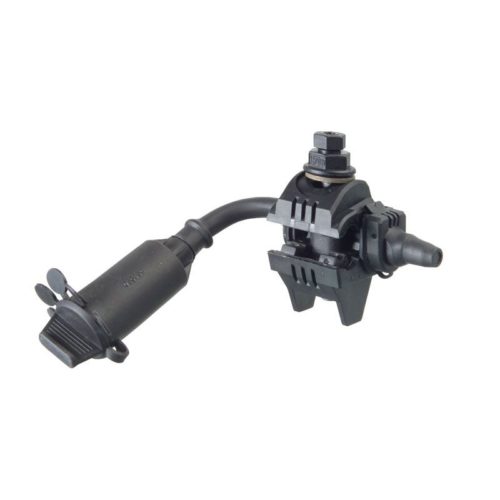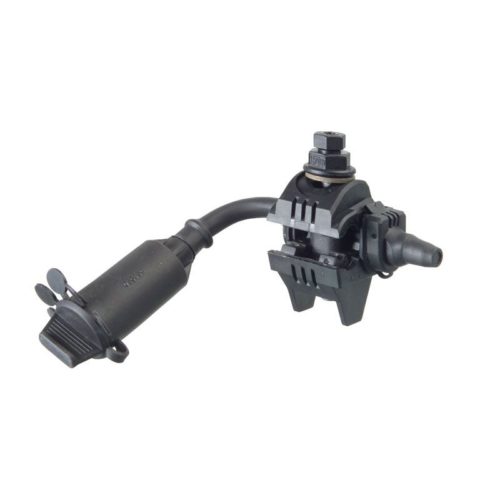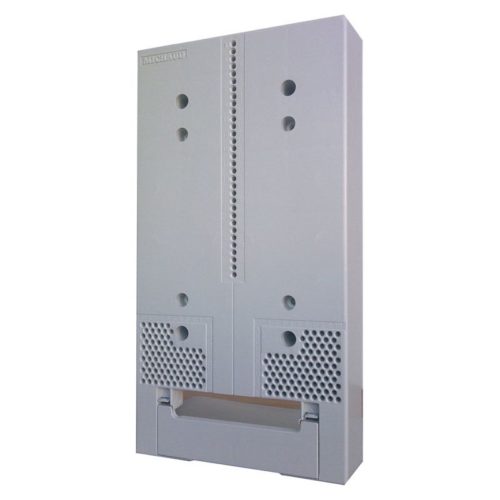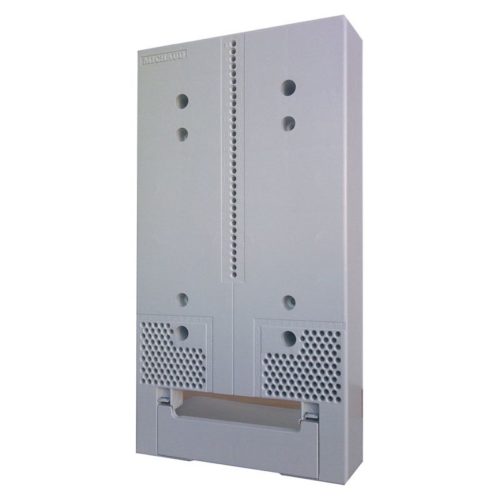-
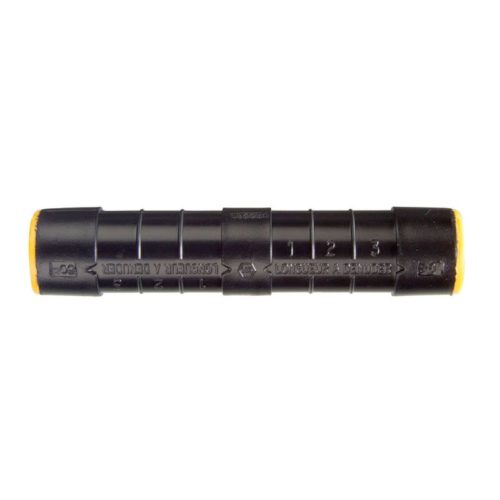
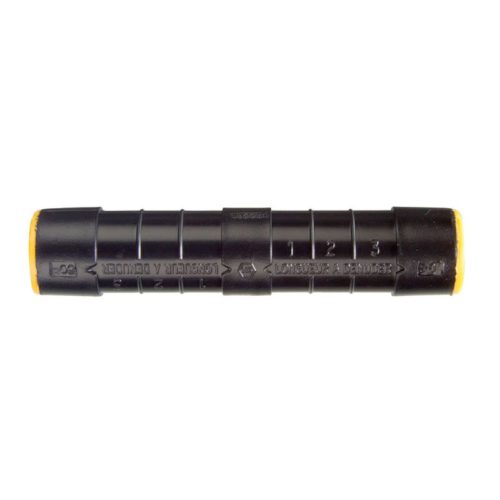 This preinsulated sleeve is designed for the connection of insulated conductors of a low voltage overhead network to other ones. The junction can be established between two conductors of equal or unequal sections. All combinations of sections are possible. The section of the cables ranges from 16mm² to 95mm². The neutral conductor is dimensioned to withstand tensile strength greater than 1 600daN for the 54mm² section and greater than 2 000daN for the 70mm² section.
This preinsulated sleeve is designed for the connection of insulated conductors of a low voltage overhead network to other ones. The junction can be established between two conductors of equal or unequal sections. All combinations of sections are possible. The section of the cables ranges from 16mm² to 95mm². The neutral conductor is dimensioned to withstand tensile strength greater than 1 600daN for the 54mm² section and greater than 2 000daN for the 70mm² section. -
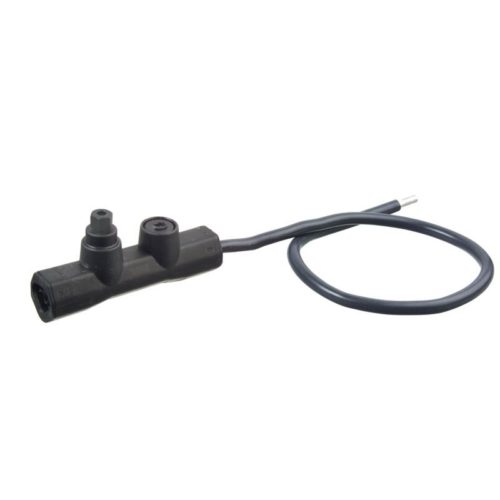
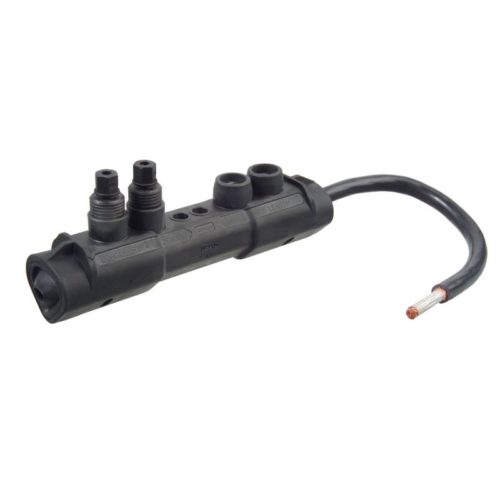 This end connector is used for connecting a conductor with a given section into a terminal with a smaller one. It is usually used for industrial supplies and long-line supplies. The fraud-preventing service connection is used for connecting a service conductor to an equipment terminal. Four models are available with black tail for Phase connection (K129 and K131) or blue for Neutral connection (K130 and K132). This solution is used to secure the outdoor connection to equipment terminals.
This end connector is used for connecting a conductor with a given section into a terminal with a smaller one. It is usually used for industrial supplies and long-line supplies. The fraud-preventing service connection is used for connecting a service conductor to an equipment terminal. Four models are available with black tail for Phase connection (K129 and K131) or blue for Neutral connection (K130 and K132). This solution is used to secure the outdoor connection to equipment terminals. -
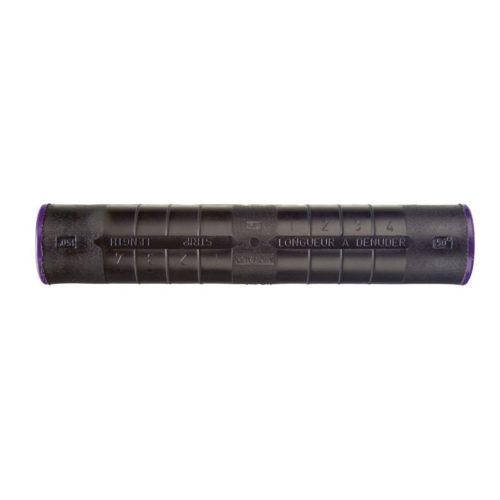
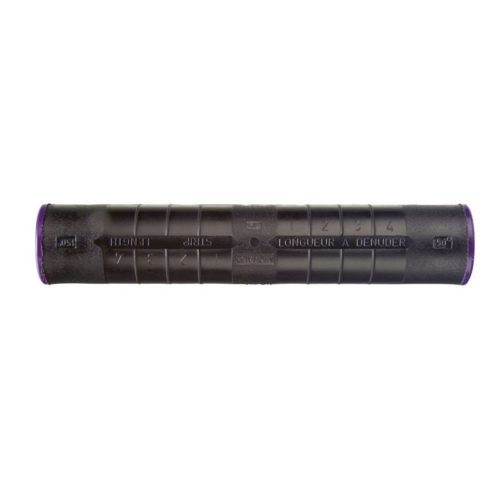 This preinsulated sleeve is designed for the connection of low voltage overhead insulated conductors to other ones. The junction can be established between two conductors of equal or unequal sections. All combinations of sections are possible. The section of the cables ranges from 95mm² to 150mm². The neutral conductor is dimensioned to withstand tensile strength greater than 1 530daN for the 95mm² and greater than 2 500daN for the 150mm² section.
This preinsulated sleeve is designed for the connection of low voltage overhead insulated conductors to other ones. The junction can be established between two conductors of equal or unequal sections. All combinations of sections are possible. The section of the cables ranges from 95mm² to 150mm². The neutral conductor is dimensioned to withstand tensile strength greater than 1 530daN for the 95mm² and greater than 2 500daN for the 150mm² section. -
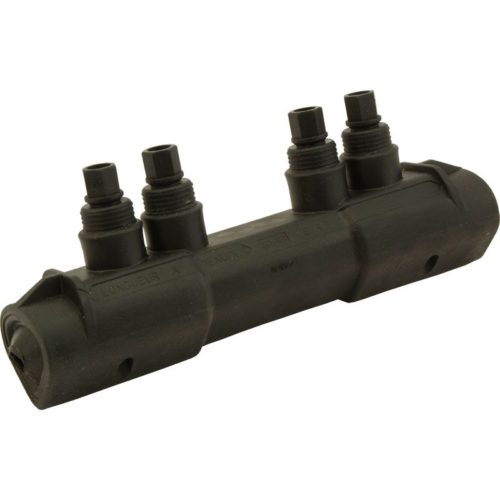
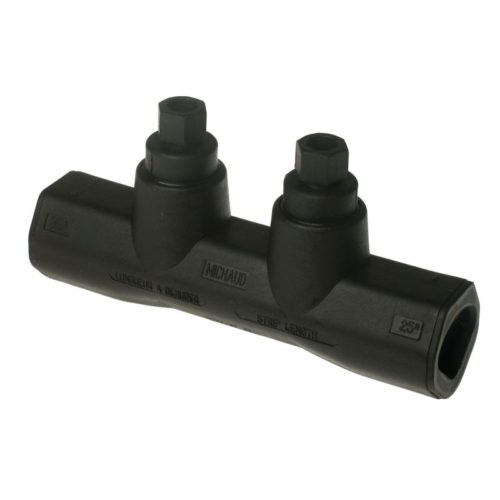 This sleeve is designed to connect aluminium or copper conductors. It does not need the sectoral cores to be rounded before. It is implemented using a 13 or 17mm spanner. The electrical capacity is respectively 240mm² aluminium conductors (K191, K192), 150mm² aluminium or copper conductors (K193) and 95mm² aluminium or copper conductors (K189).
This sleeve is designed to connect aluminium or copper conductors. It does not need the sectoral cores to be rounded before. It is implemented using a 13 or 17mm spanner. The electrical capacity is respectively 240mm² aluminium conductors (K191, K192), 150mm² aluminium or copper conductors (K193) and 95mm² aluminium or copper conductors (K189). -
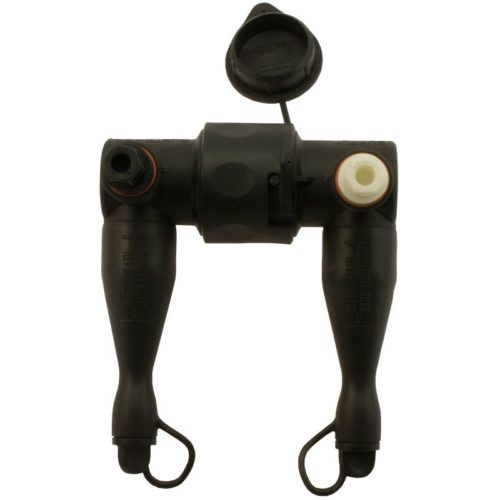
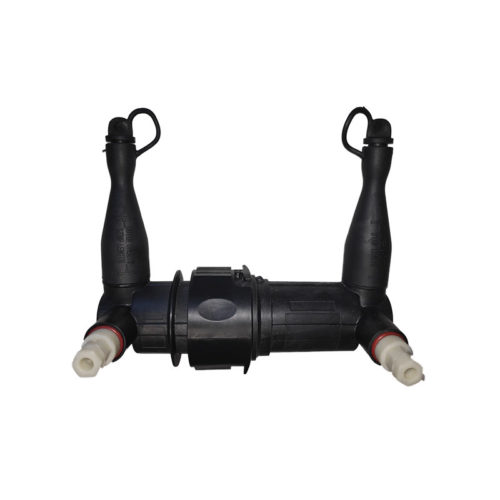 This Fuse Insulation Piercing Pit Connector (IPPC) is designed to receive a neutral tube, a mini-switch or a 100A maximum, size 22x58 fuse cartridge. It is used to connect a customer service line to an underground conductor. It is installed in a pit and can operate partially and temporary immersed in water. It is equipped with mechanical tightening terminals allowing its installation on a conductor using a simple spanner.
This Fuse Insulation Piercing Pit Connector (IPPC) is designed to receive a neutral tube, a mini-switch or a 100A maximum, size 22x58 fuse cartridge. It is used to connect a customer service line to an underground conductor. It is installed in a pit and can operate partially and temporary immersed in water. It is equipped with mechanical tightening terminals allowing its installation on a conductor using a simple spanner. -
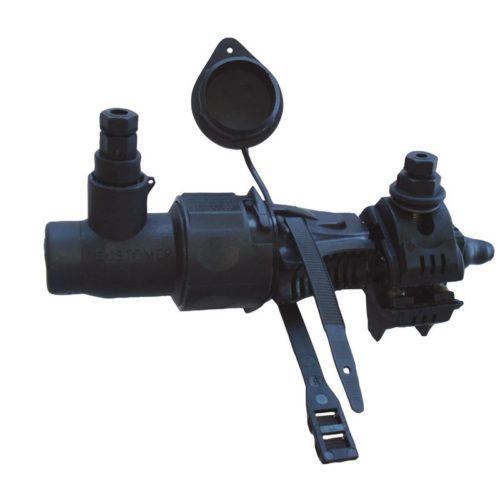 This fuse switch connector is designed to receive a 22x58mm fuse cartridge or neutral tube. It is used to protect the insulated service conductors connected to a low voltage A.B.C. (Aerial Bundled Conductors). It is used in no mechanical load situations. Opening and closing of the cutout can be performed under a load of 63A maximum.
This fuse switch connector is designed to receive a 22x58mm fuse cartridge or neutral tube. It is used to protect the insulated service conductors connected to a low voltage A.B.C. (Aerial Bundled Conductors). It is used in no mechanical load situations. Opening and closing of the cutout can be performed under a load of 63A maximum. -
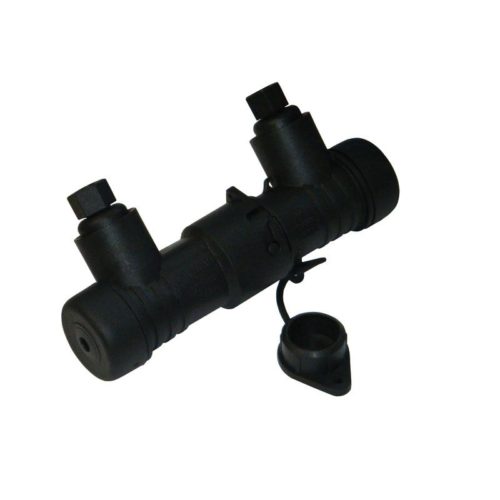
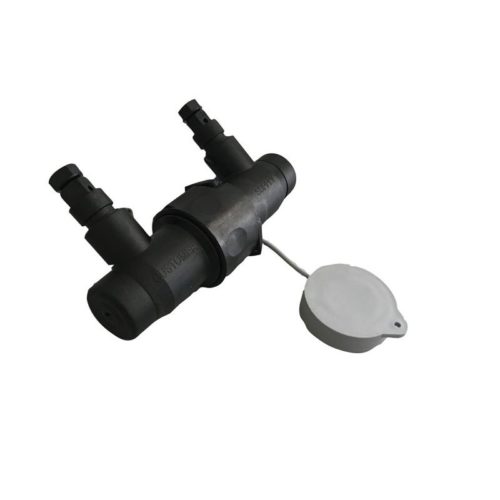 This cutout sleeve is designed to receive a 22x58 fuse cartridge, a neutral tube or a mini-switch. It is used in no mechanical load situations. It is equipped with mechanical tightening terminals allowing its installation using a simple spanner. Opening and closing of the cutout can be performed under a load of 63A maximum.
This cutout sleeve is designed to receive a 22x58 fuse cartridge, a neutral tube or a mini-switch. It is used in no mechanical load situations. It is equipped with mechanical tightening terminals allowing its installation using a simple spanner. Opening and closing of the cutout can be performed under a load of 63A maximum. -
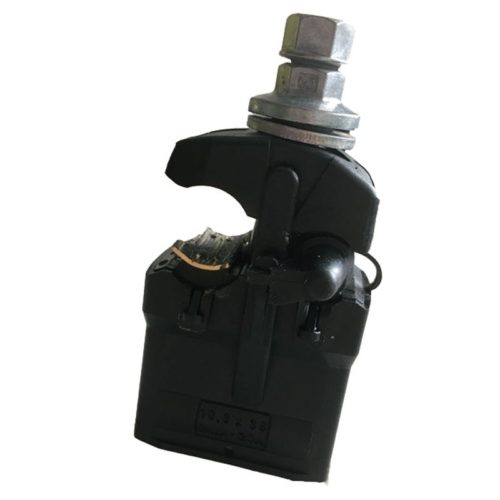
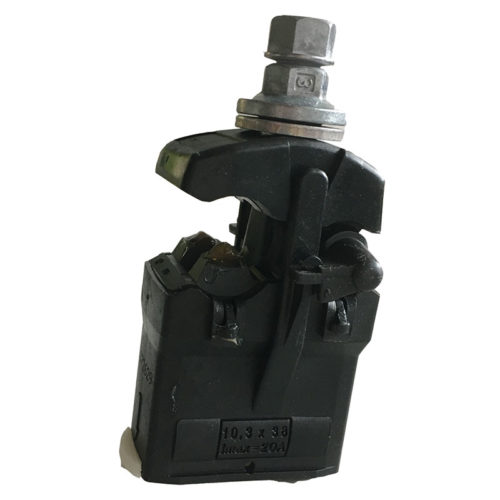 This fuse switch connector is designed to receive a 10.3x38mm fuse cartridge or neutral tube. It is used to protect street light or insulated service conductors connected to the low voltage A.B.C. (Aerial Bundled Conductors) or bare line conductors. It is designed for 20A maximum fuse cartridge. It is used in no mechanical load situations.
This fuse switch connector is designed to receive a 10.3x38mm fuse cartridge or neutral tube. It is used to protect street light or insulated service conductors connected to the low voltage A.B.C. (Aerial Bundled Conductors) or bare line conductors. It is designed for 20A maximum fuse cartridge. It is used in no mechanical load situations. -
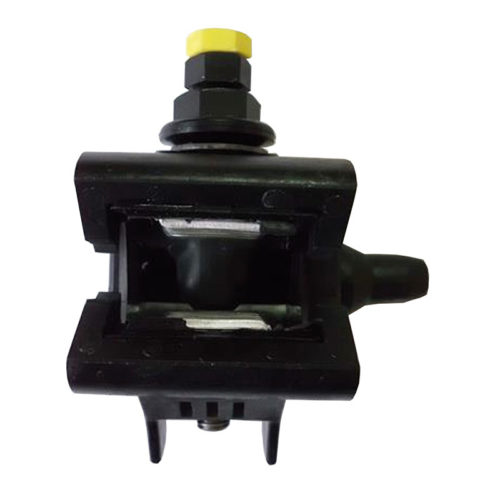
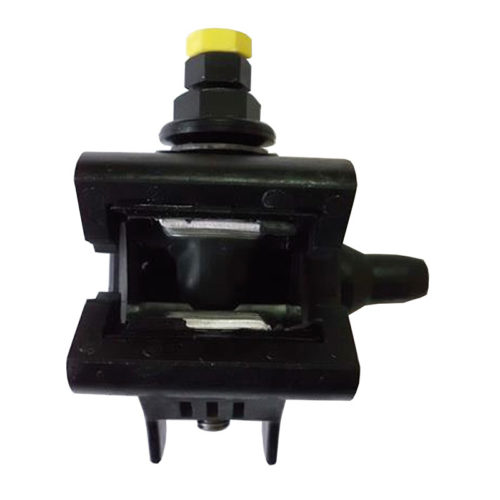 This connector designed to connect the insulated service conductors to the low voltage overhead aluminium alloy or copper bare conductor network. Two versions are available according to the type of conductor to be connected (Al or Cu). The tap and main cables are connected separately step by step to improve the electrical connection: 1. First the tap line is connected by piercing the insulation, 2. Then the main line is connected. Installation can be carried out under a maximum load of 100A.
This connector designed to connect the insulated service conductors to the low voltage overhead aluminium alloy or copper bare conductor network. Two versions are available according to the type of conductor to be connected (Al or Cu). The tap and main cables are connected separately step by step to improve the electrical connection: 1. First the tap line is connected by piercing the insulation, 2. Then the main line is connected. Installation can be carried out under a maximum load of 100A. -
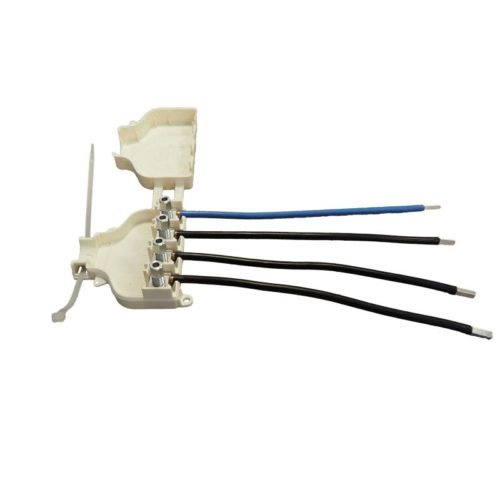
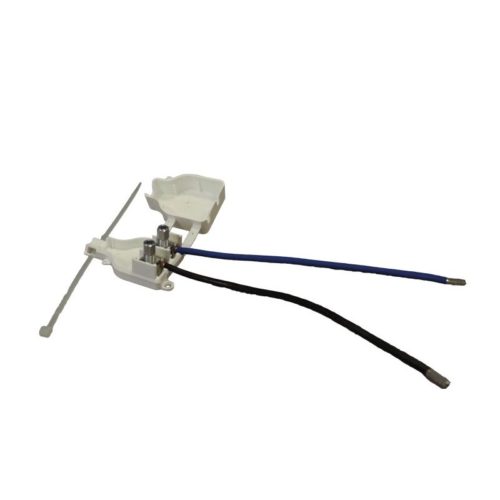 The concentric insulated service cable is used for the connection between the low-voltage network and the premise. It is designed to limit fraud and thus to reduce non-technical losses thanks to a peripheral neutral cable. Any unauthorised connection to this cable will create a short-circuit and will automatically cut off electricity supply. It is stretched overhead to a maximum range of 40m. The accessories enable to realise the fulfilment of the single phase or three phase concentric cable before performing a connection at the top of a pole or inside the cabinet. The kits ensure the insulation and the sealing of the anti-fraud conductor. The end connectors receive the fulfilment of the concentric cable and enable the leading-in cables connection to electrical equipment terminals. The tool for stripping is used to strip the cable in order to reconstitute and isolate the neutral for connection.
The concentric insulated service cable is used for the connection between the low-voltage network and the premise. It is designed to limit fraud and thus to reduce non-technical losses thanks to a peripheral neutral cable. Any unauthorised connection to this cable will create a short-circuit and will automatically cut off electricity supply. It is stretched overhead to a maximum range of 40m. The accessories enable to realise the fulfilment of the single phase or three phase concentric cable before performing a connection at the top of a pole or inside the cabinet. The kits ensure the insulation and the sealing of the anti-fraud conductor. The end connectors receive the fulfilment of the concentric cable and enable the leading-in cables connection to electrical equipment terminals. The tool for stripping is used to strip the cable in order to reconstitute and isolate the neutral for connection. -
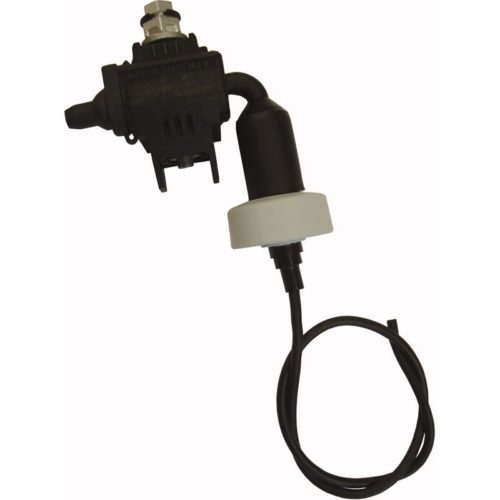
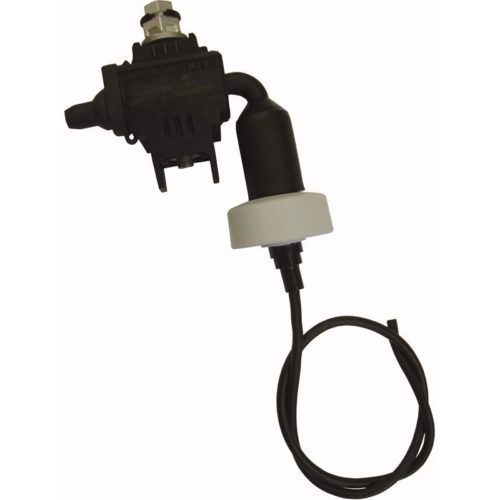 The surge protection device connector (SPD IPC) is designed to protect low voltage overhead lines and electric equipment against over-voltages. It enables the current from the lightning to be led to the ground. The surge protection device connector includes the following elements: - An insulation piercing connector, - A terminal outlet inserted in the end cap of the connector, - A surge protection device (metal oxide overmoulded with silicone) screwed into the terminal outlet, - An earth system tail welded to the surge protection device. The surge protection device reacts: - After a certain number of overvoltages, when the current passing through the surge protection device increases by more than 1mA, - In the case of atmospheric discharge (lightning strike), the current exceeding 65mA. After the surge protection device has performed, the earth system tail physically separates from the connector. The surge protection device then should be replaced with an available spare part (comprising the surge protection device and the earth system tail).
The surge protection device connector (SPD IPC) is designed to protect low voltage overhead lines and electric equipment against over-voltages. It enables the current from the lightning to be led to the ground. The surge protection device connector includes the following elements: - An insulation piercing connector, - A terminal outlet inserted in the end cap of the connector, - A surge protection device (metal oxide overmoulded with silicone) screwed into the terminal outlet, - An earth system tail welded to the surge protection device. The surge protection device reacts: - After a certain number of overvoltages, when the current passing through the surge protection device increases by more than 1mA, - In the case of atmospheric discharge (lightning strike), the current exceeding 65mA. After the surge protection device has performed, the earth system tail physically separates from the connector. The surge protection device then should be replaced with an available spare part (comprising the surge protection device and the earth system tail). -
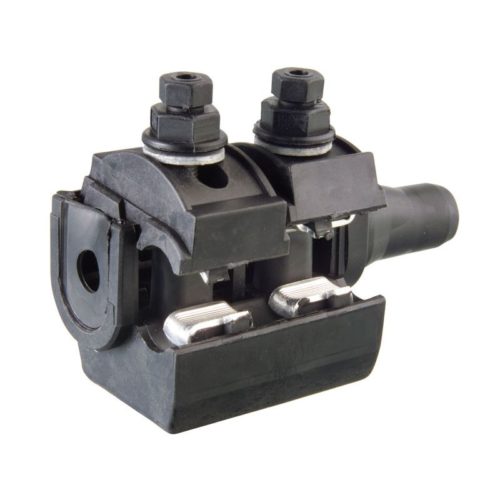
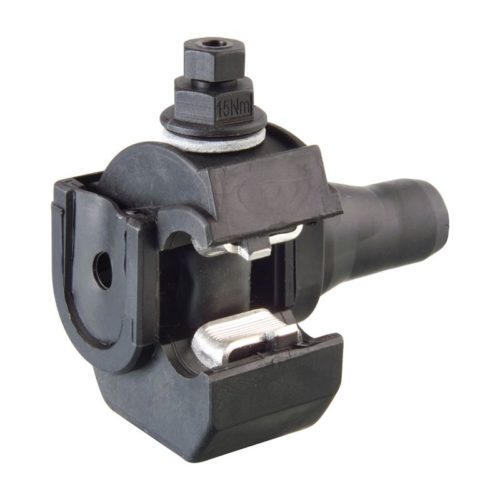 This connector is designed to connect a low voltage A.B.C. (Aerial Bundled Conductors) network to another low voltage aluminium alloy or copper bare conductors network. The section of the bare conductors is from 7 to 240mm² depending on the model. The section of the insulated cables is from 25 to 150mm² depending on the model.
This connector is designed to connect a low voltage A.B.C. (Aerial Bundled Conductors) network to another low voltage aluminium alloy or copper bare conductors network. The section of the bare conductors is from 7 to 240mm² depending on the model. The section of the insulated cables is from 25 to 150mm² depending on the model. -
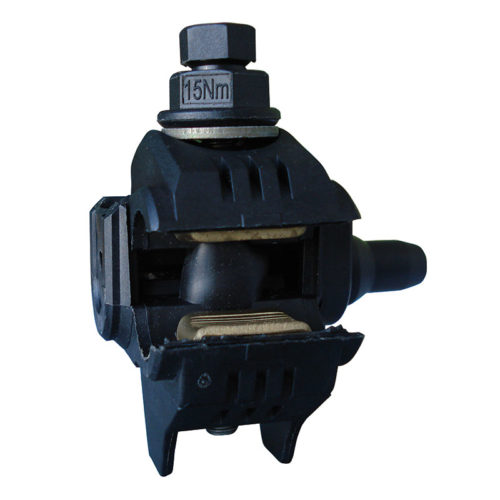
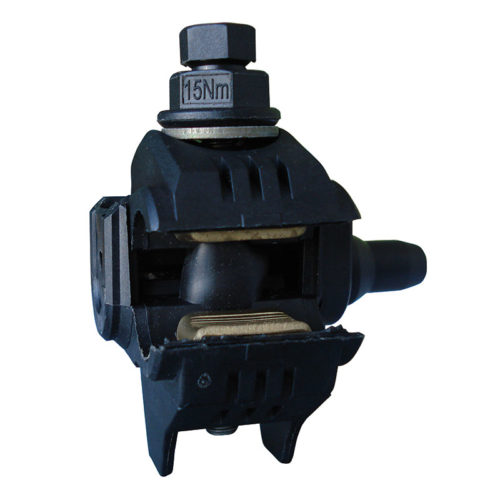 This connector is designed to connect the insulated service conductors to the low voltage overhead copper or aluminium alloy bare conductor network. Two versions are available according to the type of conductor to be connected (Al or Cu): - CNA (with aluminium alloy contact bridges), - CNU (with rough brass contact bridges).
This connector is designed to connect the insulated service conductors to the low voltage overhead copper or aluminium alloy bare conductor network. Two versions are available according to the type of conductor to be connected (Al or Cu): - CNA (with aluminium alloy contact bridges), - CNU (with rough brass contact bridges). -
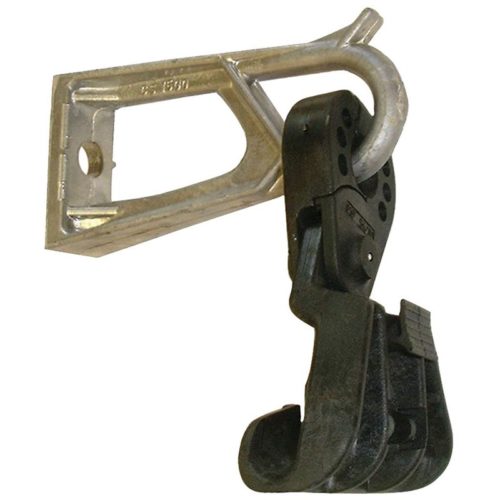
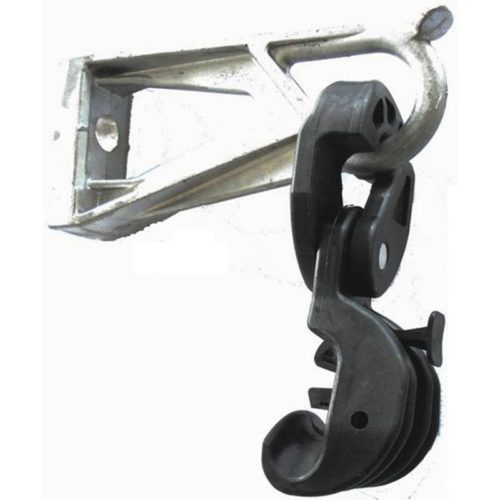 The anchoring assembly is designed for the 1500daN single or double anchoring of A.B.C. (Aerial Bundled Conductors) with insulated neutral messenger of 54.6 and 70mm² sections. It comprises a bracket supporting one or two anchoring clamps. The suspension assembly is designed for suspending the low voltage A.B.C. (Aerial Bundled Conductors) with insulated neutral messenger of 50 - 95mm² sections for code K277 and 50 - 70mm² sections for code K283. It comprises a movable link system, a suspension clamp and a bracket. 2 standard suspension assemblies are available: - ES 1500, - ESF 715 equipped with a fuse element (breaking 715 ± 65daN). The fuse element can be factory calibrated between 500 and 1 200daN. It is designed to break when an abnormal effort is applied on the A.B.C. The cable drops without causing the pole to break (i.e.: tree falling on to a power line). The cable can be quickly put back in position thanks to the installation of a new clamp on the bracket still in place.
The anchoring assembly is designed for the 1500daN single or double anchoring of A.B.C. (Aerial Bundled Conductors) with insulated neutral messenger of 54.6 and 70mm² sections. It comprises a bracket supporting one or two anchoring clamps. The suspension assembly is designed for suspending the low voltage A.B.C. (Aerial Bundled Conductors) with insulated neutral messenger of 50 - 95mm² sections for code K277 and 50 - 70mm² sections for code K283. It comprises a movable link system, a suspension clamp and a bracket. 2 standard suspension assemblies are available: - ES 1500, - ESF 715 equipped with a fuse element (breaking 715 ± 65daN). The fuse element can be factory calibrated between 500 and 1 200daN. It is designed to break when an abnormal effort is applied on the A.B.C. The cable drops without causing the pole to break (i.e.: tree falling on to a power line). The cable can be quickly put back in position thanks to the installation of a new clamp on the bracket still in place. -
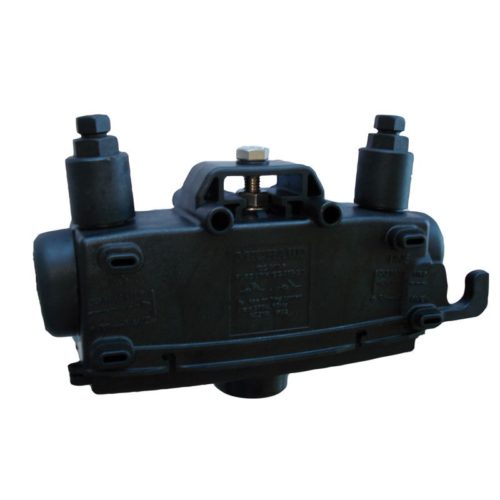 This Fuse Switch Disconnector (FSD) is a single phase device. It is installed at the top of pole or on façade. It protects the overhead connection supplying an individual customer and the low voltage network. It is designed to receive a neutral tube or a 100A maximum, size 22x58 fuse cartridge (according to the IEC 269-2.1 standard)
This Fuse Switch Disconnector (FSD) is a single phase device. It is installed at the top of pole or on façade. It protects the overhead connection supplying an individual customer and the low voltage network. It is designed to receive a neutral tube or a 100A maximum, size 22x58 fuse cartridge (according to the IEC 269-2.1 standard) -
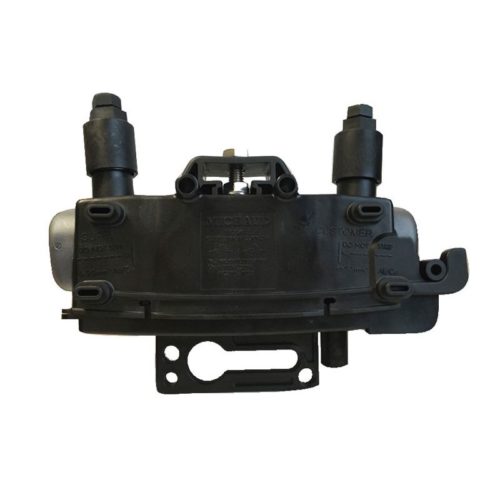
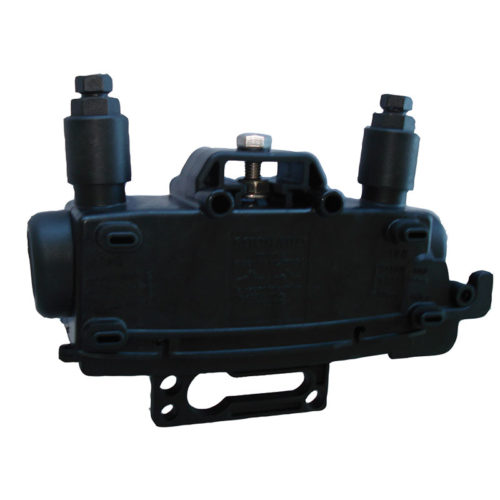 This Fuse Switch Disconnector (FSD) is a single phase device. It is installed at the top of pole or on façade. It protects the overhead connection supplying an individual customer and the low voltage network. It is designated to receive a 160A fuse cartridge or 240A maximum solid connecting link size 00 (according to the IEC 269-2.1 standard).
This Fuse Switch Disconnector (FSD) is a single phase device. It is installed at the top of pole or on façade. It protects the overhead connection supplying an individual customer and the low voltage network. It is designated to receive a 160A fuse cartridge or 240A maximum solid connecting link size 00 (according to the IEC 269-2.1 standard). -
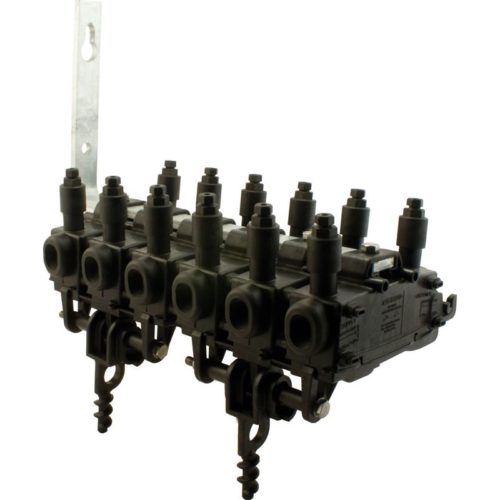
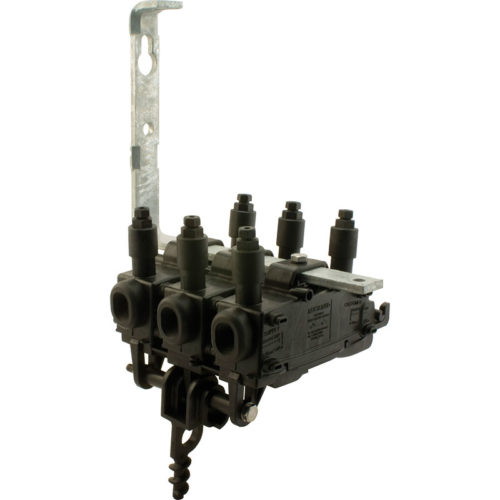 This Gang Fuse Switch Disconnector (FSD) is a multi-phase device. It is installed at the top of a pole or on façade. It protects the overhead connection supplying one or more multi-phase customers, or, the low voltage circuit of a pole mounted transformer. It is designed to receive 160A fuse cartridge or 240A solid connecting links, size 00 (accordig to the IEC 269-2.1 standard).
This Gang Fuse Switch Disconnector (FSD) is a multi-phase device. It is installed at the top of a pole or on façade. It protects the overhead connection supplying one or more multi-phase customers, or, the low voltage circuit of a pole mounted transformer. It is designed to receive 160A fuse cartridge or 240A solid connecting links, size 00 (accordig to the IEC 269-2.1 standard). -
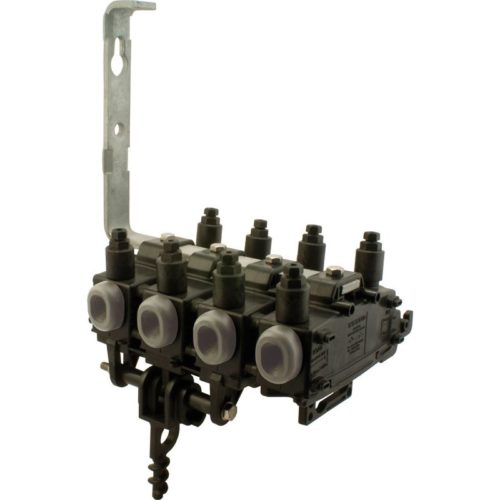
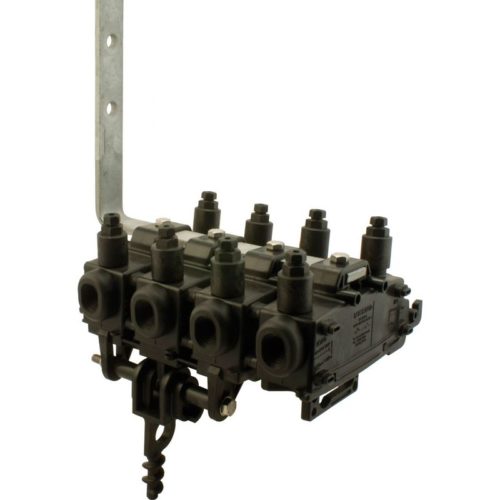 This Gang Fuse Switch Disconnector (FSD) is a multi-phase device. It is installed at the top of a pole or on façade. It protects the overhead connection supplying one or more multi-phase customers, or, the low voltage circuit of a pole mounted transformer. It is designed to receive 160A fuse cartridge or 240A solid connecting links, size 00 (according to the IEC 269-2.1 standard).
This Gang Fuse Switch Disconnector (FSD) is a multi-phase device. It is installed at the top of a pole or on façade. It protects the overhead connection supplying one or more multi-phase customers, or, the low voltage circuit of a pole mounted transformer. It is designed to receive 160A fuse cartridge or 240A solid connecting links, size 00 (according to the IEC 269-2.1 standard). -
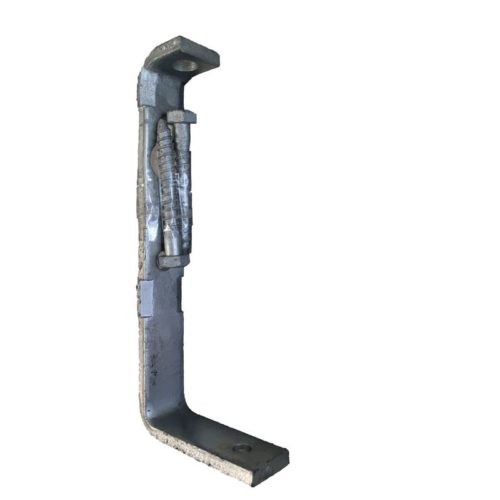
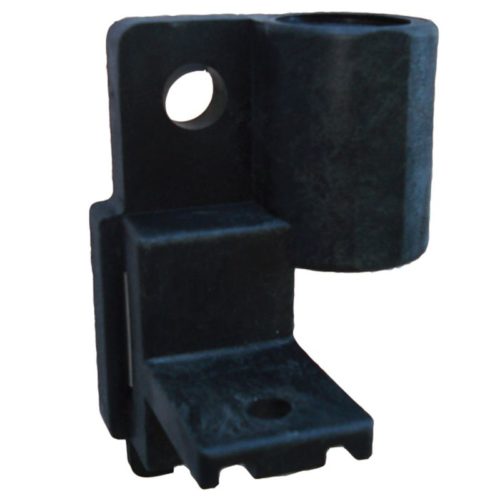 This Fuse Switch Disconnector (FSD) is a single phase device. It is installed at the top of pole or on façade. It protects the overhead connection supplying an individual customer and the low voltage network. It is designed to receive a neutral tube or 100A maximum, size 22x58 fuse cartridge (according to the IEC 269-2.1 standard).
This Fuse Switch Disconnector (FSD) is a single phase device. It is installed at the top of pole or on façade. It protects the overhead connection supplying an individual customer and the low voltage network. It is designed to receive a neutral tube or 100A maximum, size 22x58 fuse cartridge (according to the IEC 269-2.1 standard). -
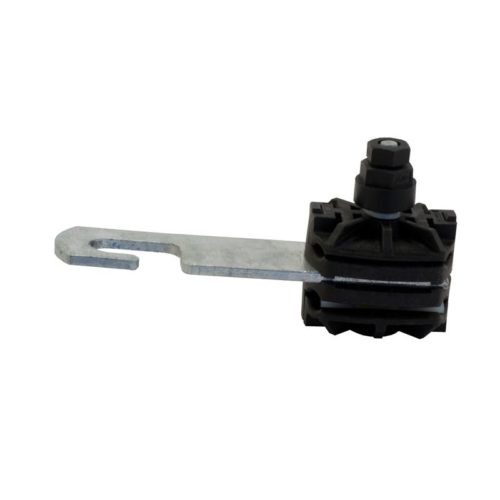
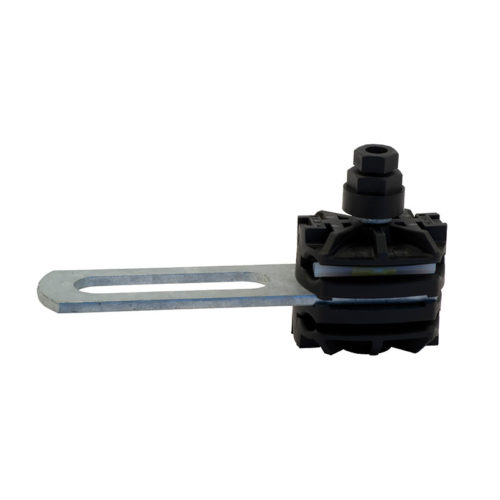 The service anchoring assembly EA 25 is designed for fixing low voltage service A.B.C. (Aerial Bundled Conductors) with capacity of 2x6 to 4x25mm². The anchoring clamp is also available in an adjustable hook version. The service anchoring assembly PA 35 is designed for fixing or suspending low voltage service A.B.C. (Aerial Bundled Conductors) with capacity of 3x16 to 4x35mm².
The service anchoring assembly EA 25 is designed for fixing low voltage service A.B.C. (Aerial Bundled Conductors) with capacity of 2x6 to 4x25mm². The anchoring clamp is also available in an adjustable hook version. The service anchoring assembly PA 35 is designed for fixing or suspending low voltage service A.B.C. (Aerial Bundled Conductors) with capacity of 3x16 to 4x35mm². -
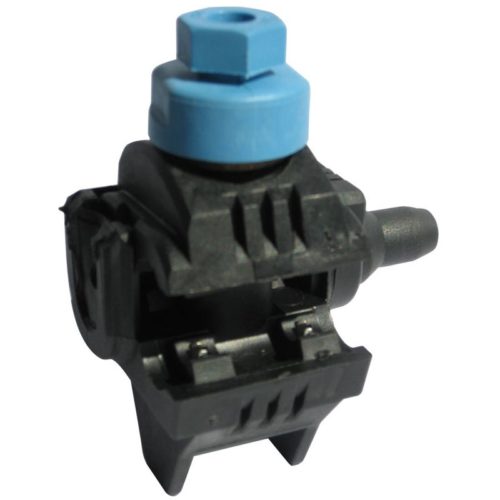
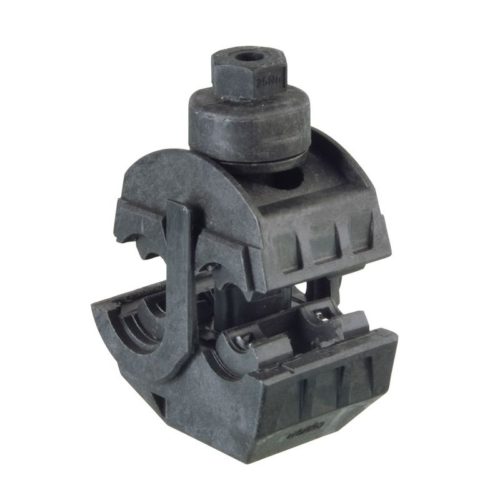 This connector is designed to be used with underground low voltage network for tapping or junction applications. It is implemented in underground cast or injected boxes. It can be used on aluminium, circular or sectoral type cables with paper or synthetic insulation. The underground network box is designed to establish the junction or tap from a round or sectoral underground network (as defined in the NF C 33-210 standard).
This connector is designed to be used with underground low voltage network for tapping or junction applications. It is implemented in underground cast or injected boxes. It can be used on aluminium, circular or sectoral type cables with paper or synthetic insulation. The underground network box is designed to establish the junction or tap from a round or sectoral underground network (as defined in the NF C 33-210 standard). -
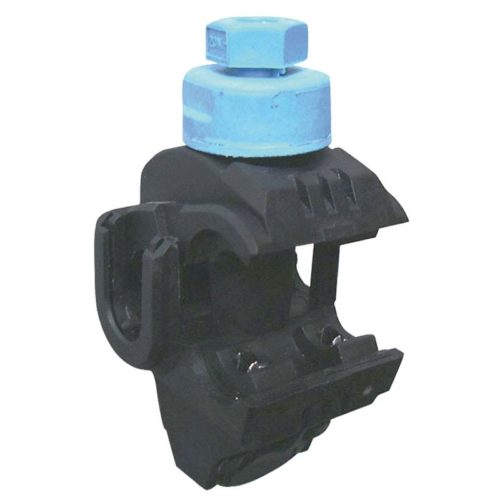
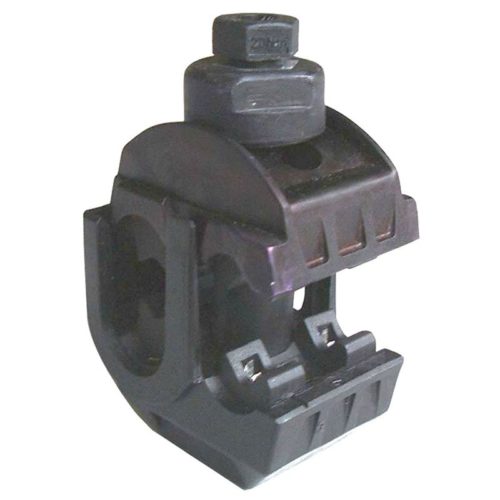 This connector is designed to establish a tap connection on low voltage underground networks. It is located in underground cast or injected boxes. It is used on a main cable, with synthetic or paper insulation, of type: - Circular or sectoral, - Copper or aluminium, - Solid or stranded core. The underground service box is designed to establish a single or double tap from one or 2 line connections from an underground network made up of round or sectoral conductors (as defined in NF C 33-210).
This connector is designed to establish a tap connection on low voltage underground networks. It is located in underground cast or injected boxes. It is used on a main cable, with synthetic or paper insulation, of type: - Circular or sectoral, - Copper or aluminium, - Solid or stranded core. The underground service box is designed to establish a single or double tap from one or 2 line connections from an underground network made up of round or sectoral conductors (as defined in NF C 33-210). -
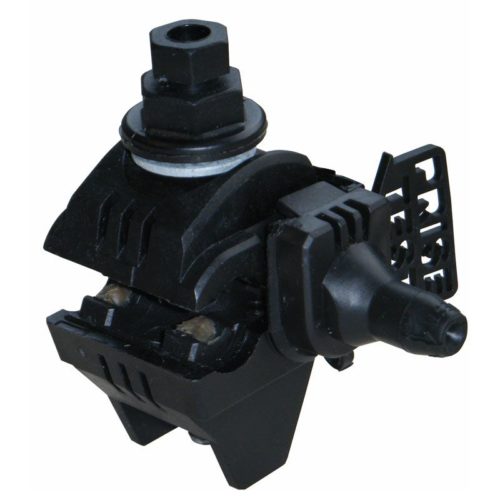
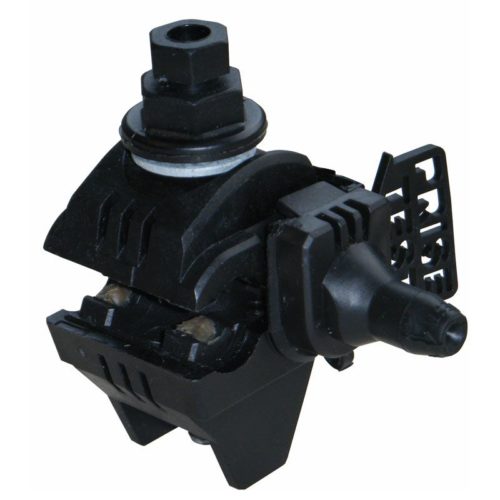 This connector is designed to connect the insulated service conductors to the low voltage A.B.C. (Aerial Bundled Conductors). It is equipped with a Test probe on the flexible sealing end cap. This enables the potential to be checked between 2 connectors installed on neutral and phase conductors and thus ensures good connection.
This connector is designed to connect the insulated service conductors to the low voltage A.B.C. (Aerial Bundled Conductors). It is equipped with a Test probe on the flexible sealing end cap. This enables the potential to be checked between 2 connectors installed on neutral and phase conductors and thus ensures good connection. -
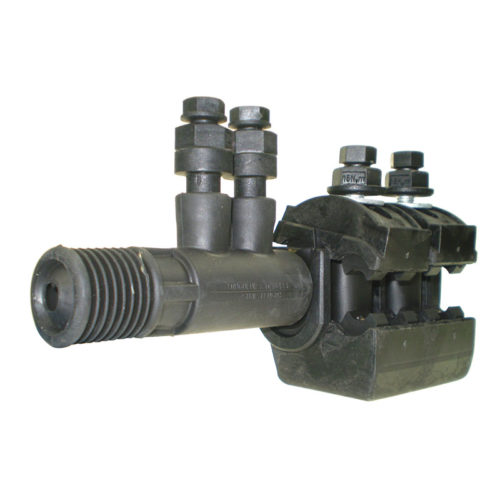
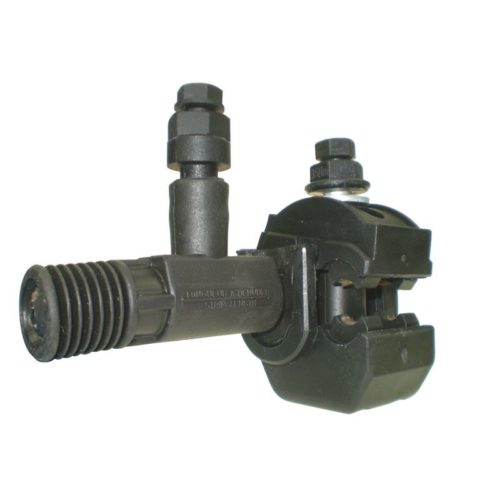 This c onnector is de signed to connect a low voltage A.B.C. (Aerial Bundled Conductors) to another network of the same type or to a low voltage aluminium alloy or copper bare conductors network. In main line, the section of the insulated conductors is from 25 to 150mm² depending on the model, and is from 7 to 120mm² on bare conductors. In tap line, the section of the insulated conductors is from 25 to 70mm² and from 35 to 150mm² depending on the model.
This c onnector is de signed to connect a low voltage A.B.C. (Aerial Bundled Conductors) to another network of the same type or to a low voltage aluminium alloy or copper bare conductors network. In main line, the section of the insulated conductors is from 25 to 150mm² depending on the model, and is from 7 to 120mm² on bare conductors. In tap line, the section of the insulated conductors is from 25 to 70mm² and from 35 to 150mm² depending on the model. -
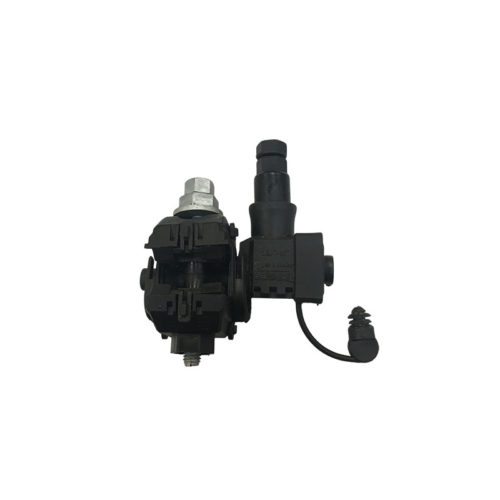
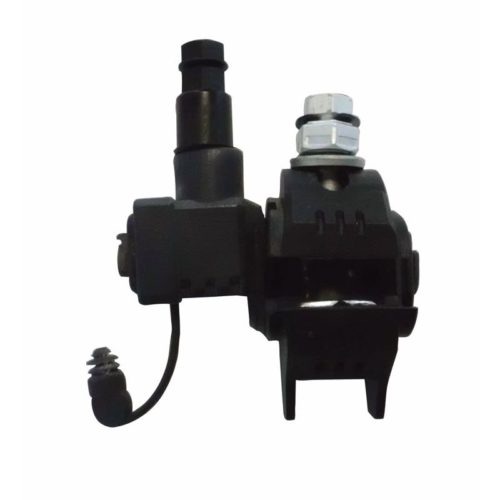 The dismountable tap contact single service connector designed to connect independently the insulated service conductors to the low voltage A.B.C. (Aerial Bundled Conductors). While connection of the main line conductor uses insulation piercing technology, that of the tap line uses stripping technology. The bare conductor service connector with independent tightening is used to connect independently the insulated service conductors to the low voltage overhead copper bare conductor network.
The dismountable tap contact single service connector designed to connect independently the insulated service conductors to the low voltage A.B.C. (Aerial Bundled Conductors). While connection of the main line conductor uses insulation piercing technology, that of the tap line uses stripping technology. The bare conductor service connector with independent tightening is used to connect independently the insulated service conductors to the low voltage overhead copper bare conductor network. -
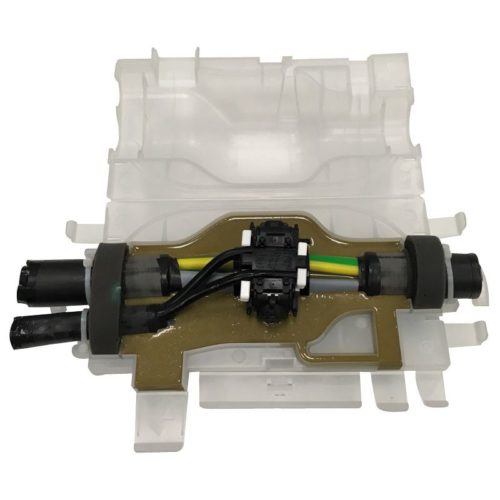
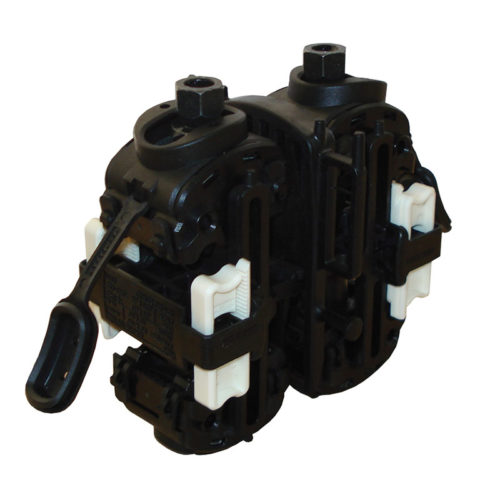 The RING connector is designed to establish a tap connection on low voltage underground networks. It is installed inside an underground box. It is used on a main cable, with synthetic insulation, of type: - Circular or sectoral, - Copper or aluminium, - Solid or stranded core. The underground box enables the tap connection from an underground network and for every conductors type (stranded, solid, multi-stranded, round or sectoral). It comprises the connector, the resin, the box and accessories according to the local standard.
The RING connector is designed to establish a tap connection on low voltage underground networks. It is installed inside an underground box. It is used on a main cable, with synthetic insulation, of type: - Circular or sectoral, - Copper or aluminium, - Solid or stranded core. The underground box enables the tap connection from an underground network and for every conductors type (stranded, solid, multi-stranded, round or sectoral). It comprises the connector, the resin, the box and accessories according to the local standard. -
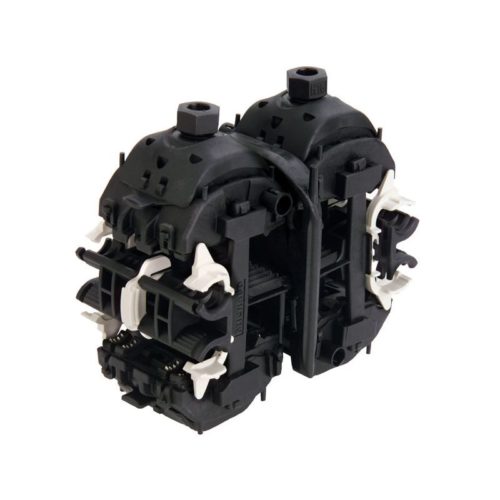 The RING connector is designed to establish a tap connection on low voltage underground networks. It is installed inside an underground box. It is used on a main cable, with synthetic insulation, of type: - Circular or sectoral, - Copper or aluminium, - Solid or stranded core. The underground box enables the tap connection from an underground network. It makes possible the tap connection of every conductors type (stranded, solid, multi-stranded, round or sectoral). It comprises the connector, the resin, the box and accessories according to the local standard.
The RING connector is designed to establish a tap connection on low voltage underground networks. It is installed inside an underground box. It is used on a main cable, with synthetic insulation, of type: - Circular or sectoral, - Copper or aluminium, - Solid or stranded core. The underground box enables the tap connection from an underground network. It makes possible the tap connection of every conductors type (stranded, solid, multi-stranded, round or sectoral). It comprises the connector, the resin, the box and accessories according to the local standard. -
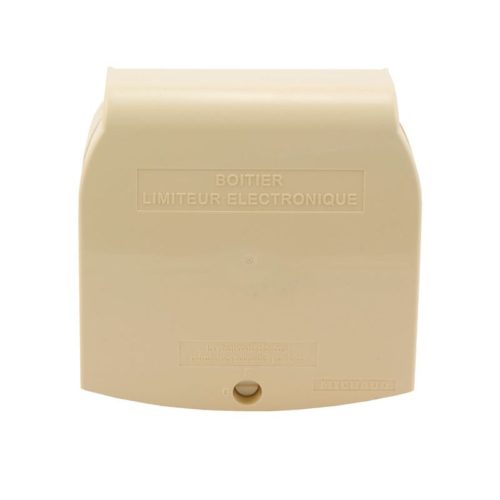
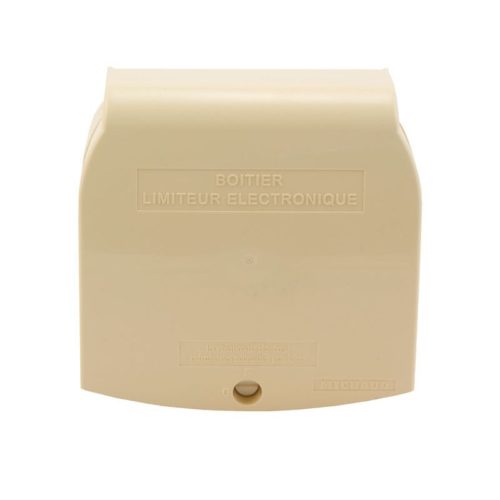 The load limiter is provided with an electronic regulator which controls intensity and manages power automatically without user/operator intervention. It is perfectly suitable for flat fee invoicing. It replaces the meter and cancels the requirement of consumption reading. The cabinet can be installed at the top of the pole or on the outside facade with the help of screws and strap. The cabinet resists to UV and to water or insect penetration (IP34D). Its cover closing can be sealed providing an excellent fraud protection. This cabinet limiter can receive a single phase connection with 2.5-16mm² cable sections.
The load limiter is provided with an electronic regulator which controls intensity and manages power automatically without user/operator intervention. It is perfectly suitable for flat fee invoicing. It replaces the meter and cancels the requirement of consumption reading. The cabinet can be installed at the top of the pole or on the outside facade with the help of screws and strap. The cabinet resists to UV and to water or insect penetration (IP34D). Its cover closing can be sealed providing an excellent fraud protection. This cabinet limiter can receive a single phase connection with 2.5-16mm² cable sections.
